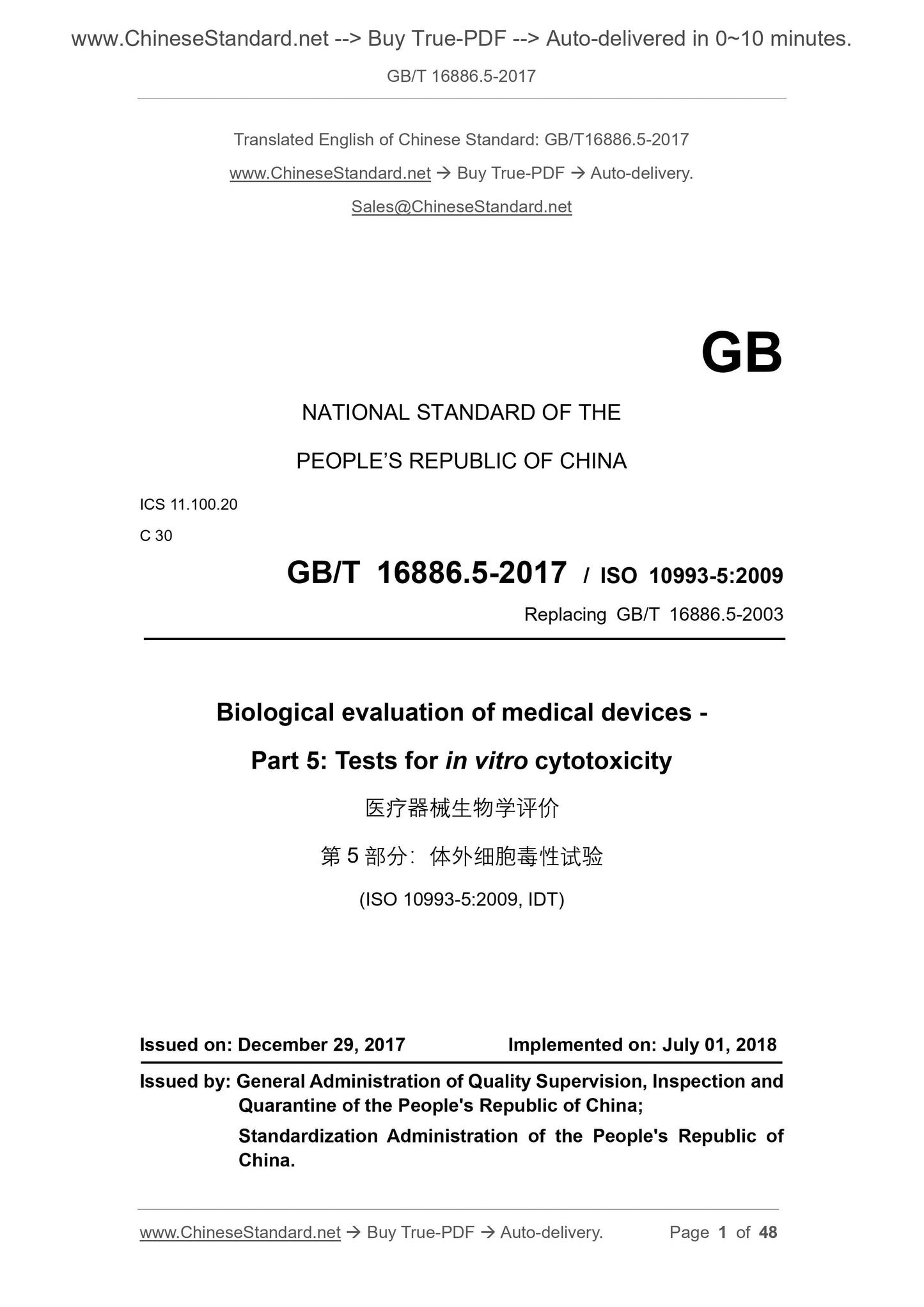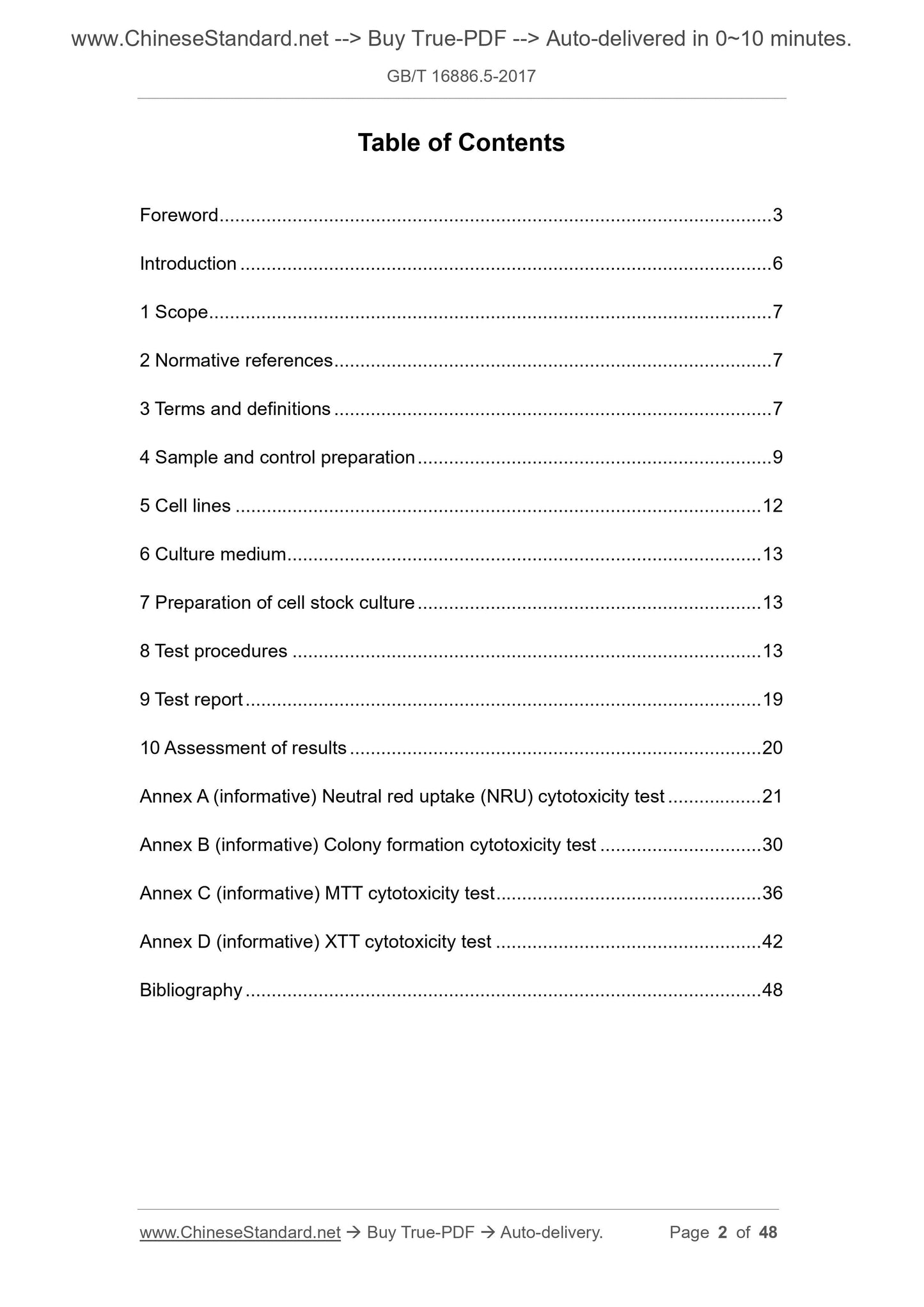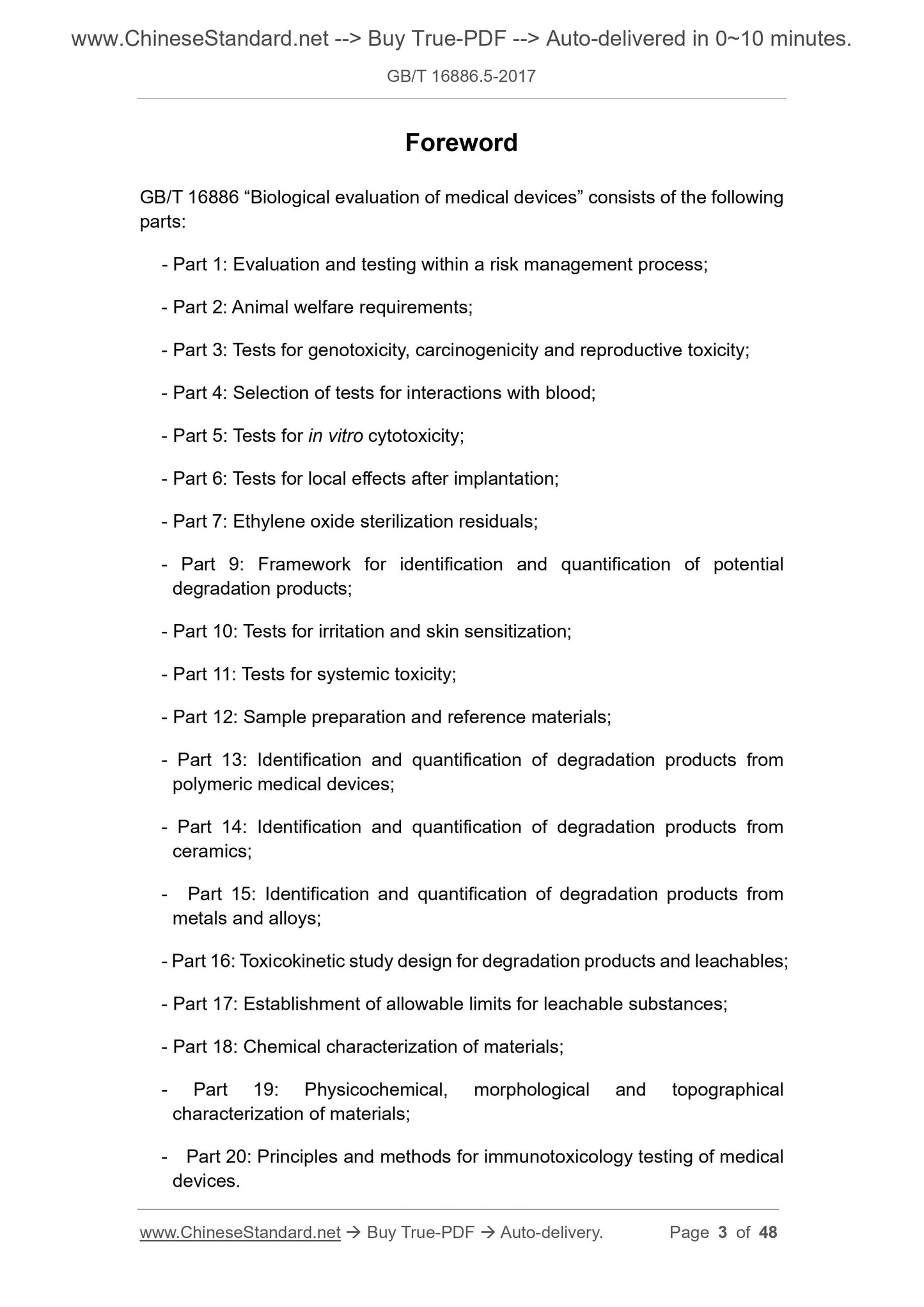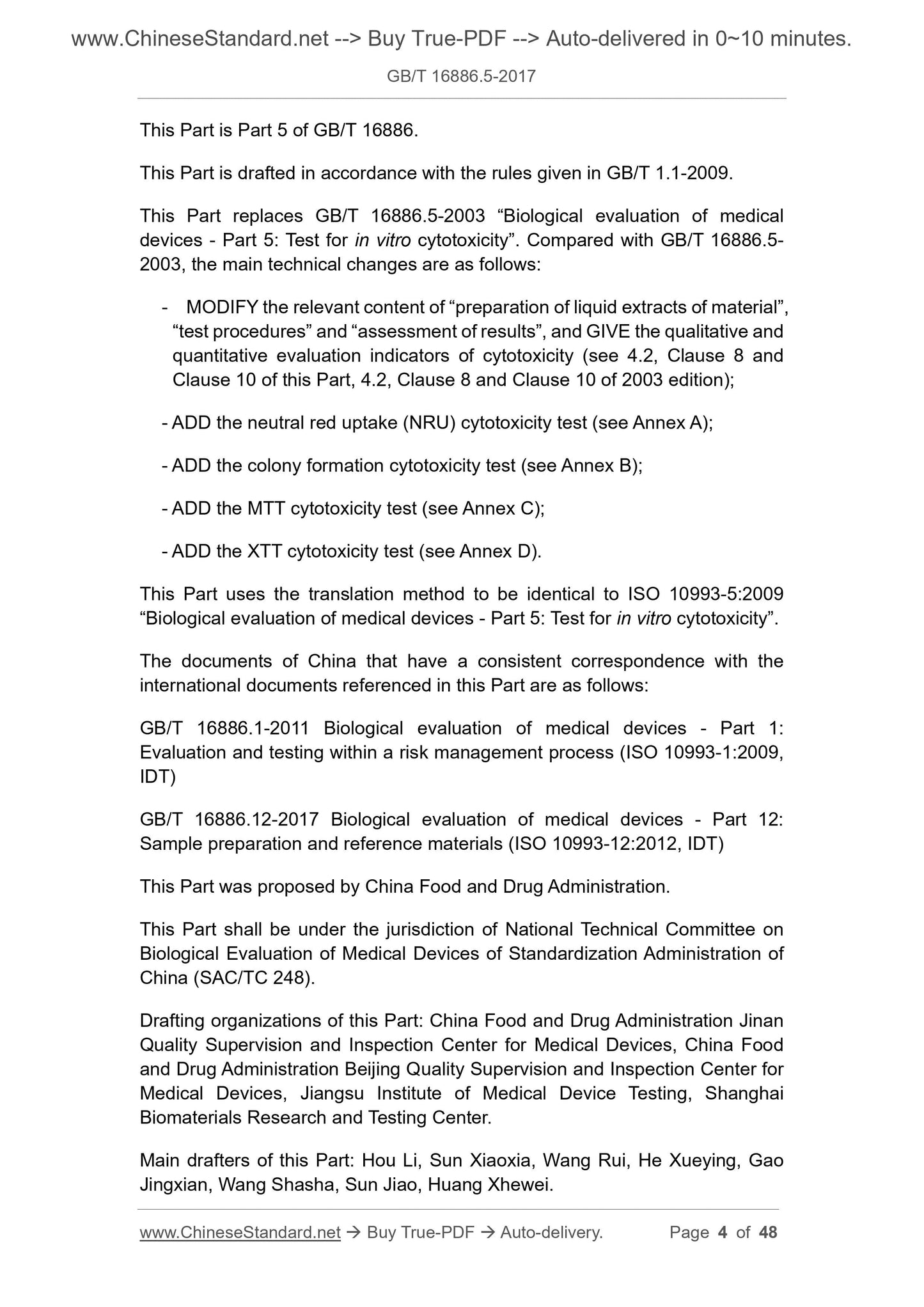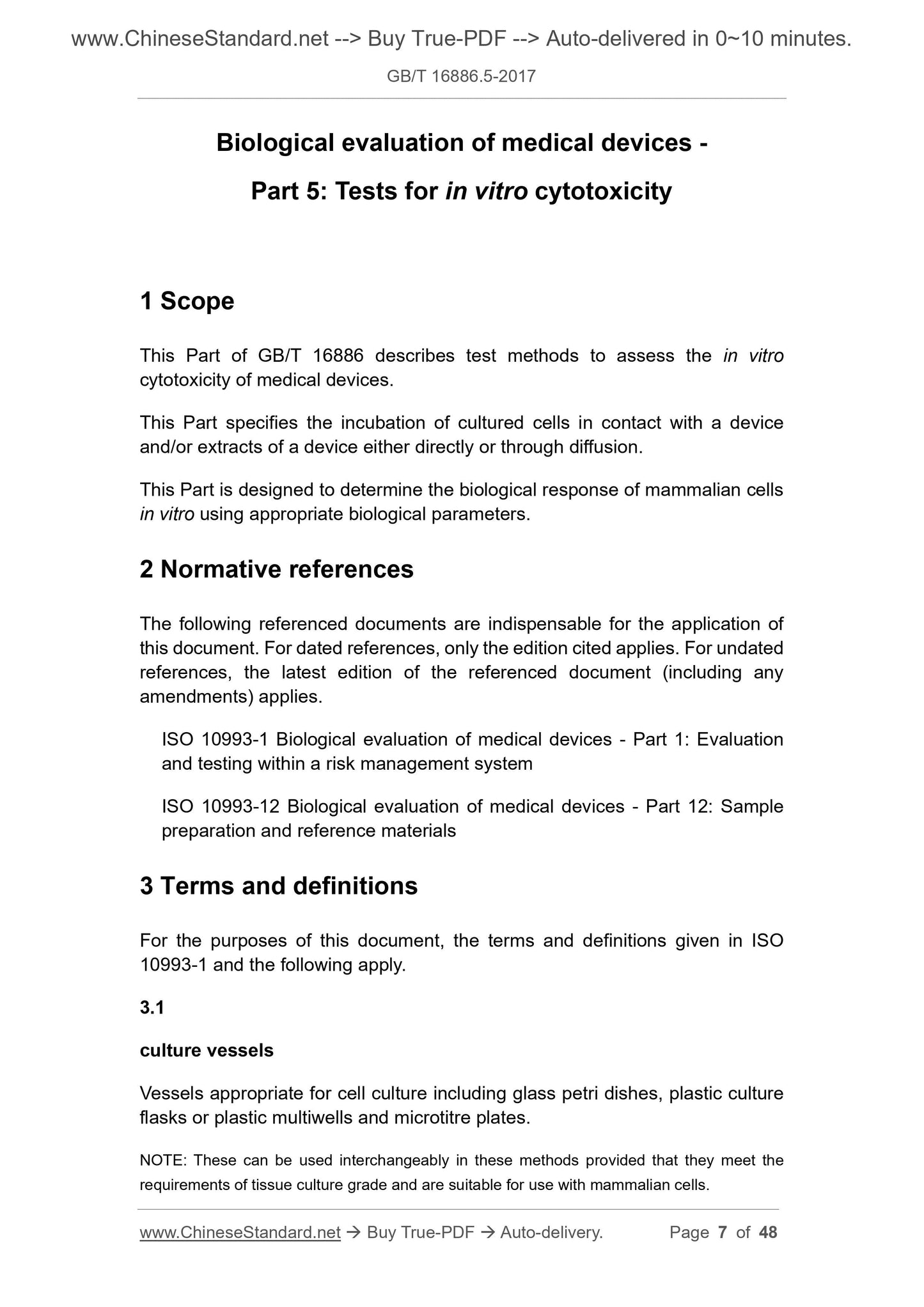1
/
of
5
www.ChineseStandard.us -- Field Test Asia Pte. Ltd.
GB/T 16886.5-2017 English PDF (GB/T16886.5-2017)
GB/T 16886.5-2017 English PDF (GB/T16886.5-2017)
Regular price
$455.00
Regular price
Sale price
$455.00
Unit price
/
per
Shipping calculated at checkout.
Couldn't load pickup availability
GB/T 16886.5-2017: Biological evaluation of medical devices -- Part 5: Tests for in vitro cytotoxicity
Delivery: 9 seconds. Download (and Email) true-PDF + Invoice.Get Quotation: Click GB/T 16886.5-2017 (Self-service in 1-minute)
Newer / historical versions: GB/T 16886.5-2017
Preview True-PDF
Scope
This Part of GB/T 16886 describes test methods to assess the in vitrocytotoxicity of medical devices.
This Part specifies the incubation of cultured cells in contact with a device
and/or extracts of a device either directly or through diffusion.
Basic Data
| Standard ID | GB/T 16886.5-2017 (GB/T16886.5-2017) |
| Description (Translated English) | Biological evaluation of medical devices -- Part 5: Tests for in vitro cytotoxicity |
| Sector / Industry | National Standard (Recommended) |
| Classification of Chinese Standard | C30 |
| Classification of International Standard | 11.100.20 |
| Word Count Estimation | 34,387 |
| Date of Issue | 2017-12-29 |
| Date of Implementation | 2018-07-01 |
| Issuing agency(ies) | General Administration of Quality Supervision, Inspection and Quarantine of the People's Republic of China, Standardization Administration of the People's Republic of China |
Share
